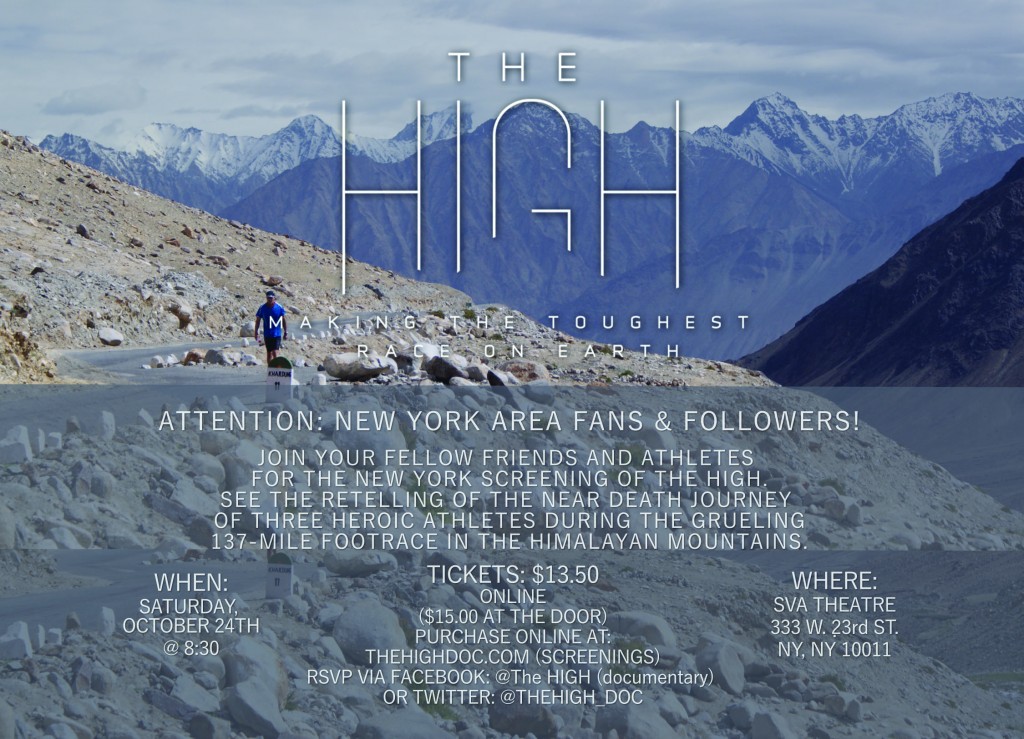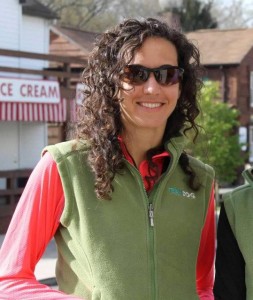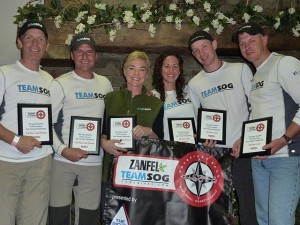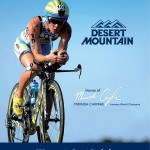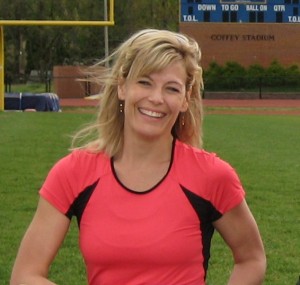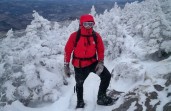Julia Pollock: Adventure Racing as a Lifestyle
By Yuhan Xu
Julia Pollock had been a competitive swimmer since the age of five. After graduating college, she became interested in adventure racing – and she has since participated in nearly 100 races, including Endorphin Fix, Mega Dose, Beast of the East, Odyssey One Day, Primal Quest San Juan Islands and USARA Nationals. She’s now 32, an avid adventure racer and on TeamSOG of American Adventure Sports. She shares with ERM her stories of adventure racing and her belief in racing as a lifestyle.
I was a competitive swimmer from age five to 21. When I graduated from college and ended my swimming career, I decided I was done with competition; I had competed my entire life and just wanted a break from the expectations. But it only took about three or four months for me to realize that I really missed the team aspect as well as the competition.
So I went looking for something that was competitive while still being fun. Competitive swimming requires an intense regimen of physical and mental training that provides a natural transition into adventure racing. I have been involved in adventure racing since 2002; but I have to admit that it was not an easy transition, having been in the water all my life and then moving to a high-impact sport like endurance running. My legs, knees and hips fought it fiercely—they still do. I’ve done a couple of ultra marathons in the past, but usually just for training. Adventure racing really is the sport for me, because it combines all the things I love about athletic competition. Shuttle me to the start line of a marked swim, bike or run course? No, thanks. Drop me off in the middle of the woods with a map, a compass, a couple of my best friends and tell me to find my way home? You’re on!
What I love most about adventure racing is that it teaches you something new about yourself every day. It’s amazing to experience how your mind works through and ultimately overcomes the mental and physical challenges. It’s enlightening. It’s hard to really explain—you have to experience it yourselfand once you do, you’ll be addicted.
You’ll see things in adventure racing that you would otherwise never get the chance to experience. Standing on a knife ridge at dawn as the sun illuminates virgin wilderness for as far as the eye can see; taking a shower in a waterfall that’s so remote it took three days to hike there; dropping down into a slot canyon that is otherwise off-limits to typical tourists—you’ll go places and see things in adventure racing that you’d never get any other way.
One of the great things about adventure racing is that every race is completely different, and it’s not always the fastest team that wins. That being said, adventure racing has gotten a lot faster over the last decadeand even more so since its inception almost 30 years ago. As we learn more and more about how far we can push our bodies, and as equipment becomes more and more technical and lightweight, athletes are able to break boundaries of human performance. It’s quite amazing—sleep deprivation, pain tolerance, endurance thresholds—the human body is amazing. The human mind is amazing! So much of adventure racing is mental—it’s pretty spectacular what the brain can will the body to do.
I’ve probably competed in 75 to 100 races over the past 11 years, all over the world, from six hours to 10 days—that adds up to a lot of mileage! I wish so much that I’d kept a journal and logged all the miles I’ve raced. I’ve had every experience from not finishing a race, to losing a teammate and continuing unranked, to standing on top of the podium. I’m lucky enough to say that it’s been more of the latter lately, but that’s not always the case.
My favorite win? Odyssey One Day in 2009. TeamSOG was at that time Team NatureCure. We raced so hard for 24 hours, and the finish was on a blind curve. When we came around that curve, we saw Team Odyssey coming in as well from an equal distance on the other side. We both spotted each other at the same time—and all of a sudden, it was a mad sprint to the finish line. Literally eight people dove across the line simultaneously, and we ended up in a tangled mess of bodies and bikes. Oh my, we all laughed so hard. They called it a tie, and I can’t think of a better team to share the podium with. They’re all such great people.
That’s the other thing that makes adventure racing so amazing—the people! You’ll never meet a more genuine, fun, kind-hearted and just plain beautiful group of people. They love life, and they want to squeeze every drop of it out of their lifetime. They really appreciate the beauty of every day. We compete against each other, but ultimately we’re competing against the course and for the love of the sport. We really are all the best of friends and are happy to see others succeed.
TeamSOG is what keeps me going. I can exercise on my own, I can live without the competition; but I really, really love the community that comes with being on a team. I have so much respect for my teammates. Often in a race I keep going not because I want to, but because my teammates deserve to finish the race and to place well. They give me inspiration and I love them so much. And of course there’s the old saying: “Fall in a mud puddle by yourself, and it sucks. Fall in a mud puddle in front of your friends, and it’s hilarious.”
When it comes to training, I don’t view it as “training”. I look at it as living a healthy lifestyle. I just don’t sit still well. I stand when I watch TV. If I don’t get outside at least a few hours a day, I go nuts. So everything is training to me. And that’s one of the things about adventure racing—everything is training. Just being on your feet for long periods of time is good adventure racing training. I run, walk and ride every chance I get.
I run a normal amount during the workweek—45 minutes to an hour and a half depending on my work schedule; and on the weekends, we try to run or ride for two to four hours a day if not longer. We used to spend weekends going out for 12- to 24-hour workouts—Saturday morning to Saturday night or Sunday morning—but life’s gotten so busy, it’s hard to find a free weekend to do that anymore. Also, in adventure racing, racing is training; many of the eight- to 12-hour races we run prepare us for the 30- to 72-hour races. There’s really no other way to train for the longer races. It’s also important to mix it up: running, riding, yoga, climbing, paddling. It adds variety and prevents overtraining in any one discipline.
TeamSOG members live in many different locations, so we don’t get a lot of opportunities to train together; but we try. I often run by myself or with my partner, Doug Crytzer. Occasionally we’ll meet up with a small group for a bike ride on the weekends, but a lot of the training is solo. I always love company and I appreciate it every chance I can get it, but I think solo training is very healthy. It’s my meditation time; it gives me the opportunity to reflect and clear my head of all the nonsense that we experience in everyday life. There are many times I have to force myself out the door early in the morning or on a bad weather day, but I’m always so happy I did it. I’ve never regretted it.
I work full-time as a risk analyst for a bank in Pittsburgh, Penn. I live with Doug, and we share time with his beautiful nine-year-old daughter, Calla. She keeps us running even more than we usually are. We spend as much time outside as we possibly can—gardening, riding (bikes and horses), running, fishing, farming—the list goes on.
It’s nice to have a partner who races as well, because we support each other’s training schedule and learn from each other all the time. Doug is an amazing individual, and I am so lucky to share a life with him. He inspires me daily with his vision and his appreciation for the simple beauty of life. It adds so much to my own outlook on why I do what I do. It helps to have a person in your life who is not just active, but who also understands what adventure racing is and has experienced it (and its ups and downs). It helps to talk all of that through with someone who really understands what’s going on in your head—and find the lessons in each experience.
Adventure racing really breaks you down and makes you think you can’t keep going. You have to search for that inspiration; and you’ll find it in a number of different places—your teammates; the sunrise after a long, cold night; a field full of flowers; a beautiful mountain stream; a rare animal sighting on the trail. Life is everywhere. Just breathe in and you’ll realize that life endures every day.
The overarching theme here is that this is not just a sport, it’s a lifestyle—a choice of lifestyle. It doesn’t start when you cross the start line, nor finish when you cross the finish line. It is present every day. If you don’t believe it in your heart that all of this is good for you—the exercise, the competition, the people, the diet, the sunshine, the interaction with nature—then you’re really missing the true experience and the value of having it.



